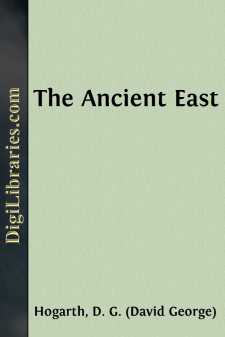Categories
- Antiques & Collectibles 13
- Architecture 36
- Art 48
- Bibles 22
- Biography & Autobiography 813
- Body, Mind & Spirit 142
- Business & Economics 28
- Children's Books 15
- Children's Fiction 12
- Computers 4
- Cooking 94
- Crafts & Hobbies 4
- Drama 346
- Education 46
- Family & Relationships 57
- Fiction 11829
- Games 19
- Gardening 17
- Health & Fitness 34
- History 1377
- House & Home 1
- Humor 147
- Juvenile Fiction 1873
- Juvenile Nonfiction 202
- Language Arts & Disciplines 88
- Law 16
- Literary Collections 686
- Literary Criticism 179
- Mathematics 13
- Medical 41
- Music 40
- Nature 179
- Non-Classifiable 1768
- Performing Arts 7
- Periodicals 1453
- Philosophy 64
- Photography 2
- Poetry 896
- Political Science 203
- Psychology 42
- Reference 154
- Religion 513
- Science 126
- Self-Help 84
- Social Science 81
- Sports & Recreation 34
- Study Aids 3
- Technology & Engineering 59
- Transportation 23
- Travel 463
- True Crime 29
The Ancient East
Categories:
Description:
Excerpt
INTRODUCTORY
The title of this book needs a word of explanation, since each of its terms can legitimately be used to denote more than one conception both of time and place. "The East" is understood widely and vaguely nowadays to include all the continent and islands of Asia, some part of Africa—the northern part where society and conditions of life are most like the Asiatic—and some regions also of South-Eastern and Eastern Europe. Therefore it may appear arbitrary to restrict it in the present book to Western Asia. But the qualifying term in my title must be invoked in justification. It is the East not of to-day but of antiquity with which I have to deal, and, therefore, I plead that it is not unreasonable to understand by "The East" what in antiquity European historians understood by that term. To Herodotus and his contemporary Greeks Egypt, Arabia and India were the South; Thrace and Scythia were the North; and Hither Asia was the East: for they conceived nothing beyond except the fabled stream of Ocean. It can be pleaded also that my restriction, while not in itself arbitrary, does, in fact, obviate an otherwise inevitable obligation to fix arbitrary bounds to the East. For the term, as used in modern times, implies a geographical area characterized by society of a certain general type, and according to his opinion of this type, each person, who thinks or writes of the East, expands or contracts its geographical area.
It is more difficult to justify the restriction which will be imposed in the following chapters on the word Ancient. This term is used even more vaguely and variously than the other. If generally it connotes the converse of "Modern," in some connections and particularly in the study of history the Modern is not usually understood to begin where the Ancient ended but to stand only for the comparatively Recent. For example, in History, the ill-defined period called the Middle and Dark Ages makes a considerable hiatus before, in the process of retrospection, we get back to a civilization which (in Europe at least) we ordinarily regard as Ancient. Again, in History, we distinguish commonly two provinces within the undoubted area of the Ancient, the Prehistoric and the Historic, the first comprising all the time to which human memory, as communicated by surviving literature, ran not, or, at least, not consciously, consistently and credibly. At the same time it is not implied that we can have no knowledge at all of the Prehistoric province. It may even be better known to us than parts of the Historic, through sure deduction from archaeological evidence. But what we learn from archaeological records is annalistic not historic, since such records have not passed through the transforming crucible of a human intelligence which reasons on events as effects of causes. The boundary between Prehistoric and Historic, however, depends too much on the subjectivity of individual historians and is too apt to vary with the progress of research to be a fixed moment....


